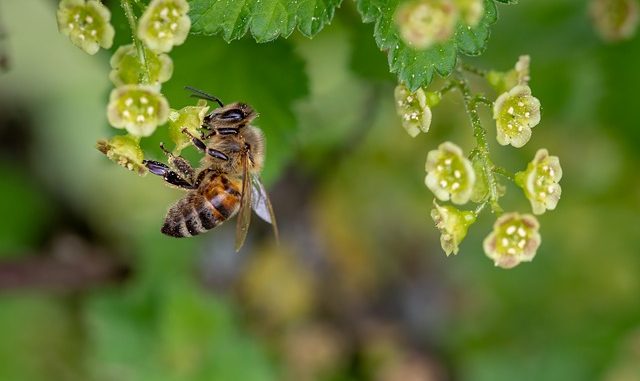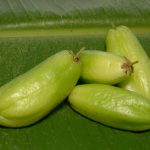
Bee pollen is a natural product from plants which is collected by bees during their visits to flowers. For many people it is perhaps the ‘only perfectly complete food’. For the bee, it is a rich source of protein which helps sustain the whole colony through the long Winter months when flowers are in such short abundance. In the world of natural food, bee pollen has become a cause celebre.
For us humans, bee pollen has become a source of nutrition. In ancient times bee products have been highly sought after. In Germany it is recognised by the Federal Ministry of health as a medicine. In China, it is an integral part of their medicinal culture. The benefits are derived from several health-promoting compounds, such as proteins, amino acids, lipids, phenolic compounds, vitamins or minerals. It is often touted as a wonderfood because of its vast range of nutrients (Kroyer and Hegedus, 2001; Campos et al., 2010). The food has also been used to supplement the diets of various animals including partridge (Seven et al., 2016).
Composition
The composition of bee pollen is mainly protein with vitamins and some fascinating biological actives thrown in. It appears to be a mix of things including flower pollen with nectar, very small amounts of honey including some enzymes along with bee secretions used to bind it all together.
The general composition is roughly according to a number of resources:-
- Carbs: 40%
- Protein: 35%
- Water: 3–9%
- Fats: 5%
- Other substances: 5–18%
What should not be a surprise is how the composition of bee pollen depends on the flower source (Ares et al., 2018). Analysis is always used to determine the flower/plant source. Various forms of analytical chromatography are used to determine the individual componentry.
It should be no surprise that minerals such as zinc, copper and iron are found. It also has a high ratio of K/Na. The colour is contributed by chlorophylls and carotenoids with a smaller amount of anthocyanins thrown in (Yang et al., 2013). The phenolics remain some of the most intriguing (Bobis et al., 2010).
Analysis
Solvent extraction using hexane is the method of choice in analysing the bioactives in bee pollen. Water content has been determined by Karl Fischer titration (Morgano et al., 2011).
Antioxidant Activity
Yes ! As with many products which we review on this website, possessing antioxidant activity is virtually a prerequisite.
Antimicrobial Properties
Bee pollen has been shown in various tests to be active against a range of bacteria (Gram-positive and negative) and yeasts. One good example is activity against the food safety microorganism Staphylococcus aureus. The yeast Candida glabrata which is an opportunist pathogen showed the most resistance but there was still some significant antimicrobial activity against it (Pascoal et al., 2014).
Antimutagenic Activity
In cell studies, bee pollen can reduce a certain degree of DNA conversion although some samples of bee pollen are more effective than others.
There is a popular belief that it is influential in ameliorating a rage of medical conditions and in Chinese medicine it is used to treat a range of conditions. All of these still require considerable clinical evidence to verify the benefits of bee pollen but they include:-
- Stress-related disorders
- Mental conditions including depression
- Anemia
- Mild cognitive decline, amnesia and memory loss
- Impotence
- Ageing
- Various skin disorders
- Chronic liver damage
The main issue is the extreme range in composition of bee pollen which requires some substantial quantification and standardization.
Liver Health
At the moment there are very few human clinical studies to support bee pollen helping with the performance of the general health of the liver. This organ is essential for many functions most of which include the breakdown and removal of toxins along with the creation of metabolites. At the moment there are just animal studies to support the view that bee pollen ameliorates and enhances liver function.
One particular study looked at bee pollen in ‘old’ animals with regards to liver performance but this has not been widely repeated elsewhere (Uzbekova et al., 2003).
Safety
Because bee pollen contains plant substances, there is always the risk of an allergenic reaction and is even described as a dangerous food for children if they have allergies to certain plants such as sesame (Martín‐Muñoz et al., 2010).
Reference
Ares, A.M., Valverde, S., Bernal, J.L., Nozal, M.J. & Bernal, J. (2018). Extraction and determination of bioactive compounds from bee pollen. Journal of Pharmaceutical and Biomedical Analysis, 147, pp. 110–124. https://www.sciencedirect.com/science/article/abs/pii/S0731708517314528?via%3Dihub
Bobis, O., Marghitas, L.A., Dezmirean, D., Morar, O., Bonta, V. & Chirila, F. (2010). Quality parameters and nutritional value of different commercial bee products. Bulletin of university of agricultural sciences and veterinary medicine Cluj‐Napoca. Animal Science and Biotechnologies, 67, pp. 91–96.
Bonvehi, J.S., Casanova, T.M. (1987) Estudio analítico para determinar la humedad del pólen. Anales de Bromatologia, 39, pp. 339-349
Campos, M.G.R., Lopes, J., Frigerio, C. & Bogdanov, S. (2010). What is the future of Bee‐Pollen? Journal of ApiProduct and ApiMedical Science, 2, pp. 131–144.
Kroyer G., Hegedus N. (2001). Evaluation of bioactive properties of pollen extracts as functional dietary food supplement. Innov. Food Sci. Emerg. Technol. 2 pp. 171–174.
Martín‐Muñoz, M. F., Bartolome, B., Camiona, M., Bobolea, I., Garcia Ara, M. C., & Quirce, S. ( 2010). Bee pollen: A dangerous food for allergic children. Identification of responsible allergens. Allergologia Et Immunopathologia, 38, pp. 263– 265. https://doi.org/10.1016/j.aller.2009.12.003
Morgano, M. A., Milani, R. F., Martins, M. C. T., & Rodriguez‐Amaya, D. B. (2011). Determination of water content in Brazilian honeybee‐collected pollen by Karl Fisher titration. Food Control, 22, pp. 1604– 1608. https://doi.org/10.1016/j.foodcont.2011.03.016
Pascoal, A., Rodrigues, S., Teixeira, A., Feás, X. & Estevinho, L.M. (2014). Biological activities of commercial bee pollens: antimicrobial, antimutagenic, antioxidant and anti‐inflammatory. Food and Chemical Toxicology, 63, pp. 233–239. https://doi.org/10.1016/j.jpba.2017.08.009
Seven, P. T., Arslan, A. S., Seven, İ., & Gökçe, Z. (2016). The effects of dietary bee pollen on lipid peroxidation and fatty acids composition of Japanese quails (Coturnix coturnix japonica) meat under different stocking densities. Journal of Applied Animal Research, 44(1), 487–491 https://www.tandfonline.com/doi/full/10.1080/09712119.2015.1091339
Yang, K., Wu, D., Ye, X., Liu, D., Chen, J. & Sun, P. (2013). Characterisation of chemical composition of bee pollen in China. Journal of Agricultural and Food Chemistry, 61, pp. 708–718.

Leave a Reply